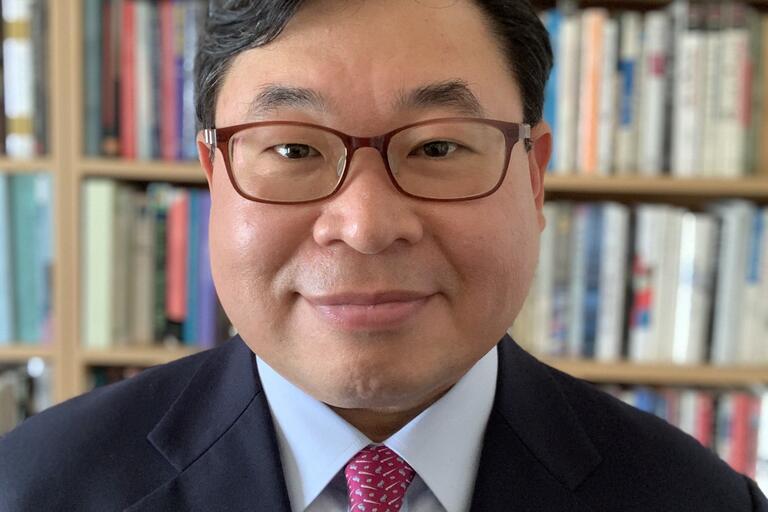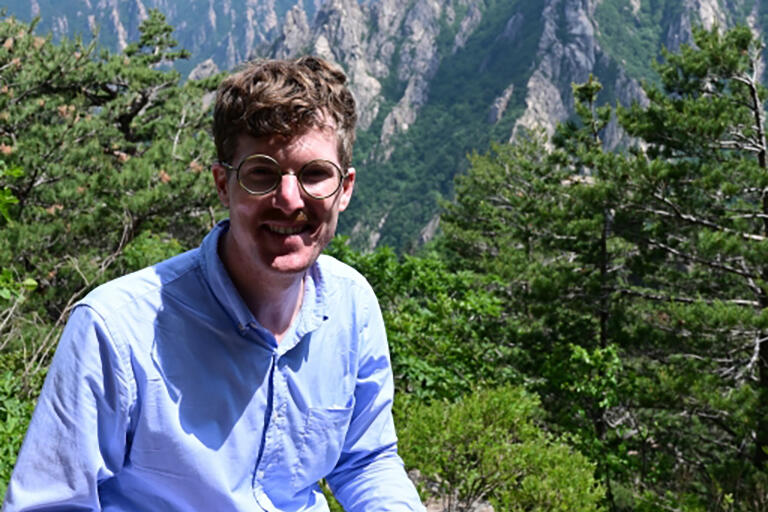The launch of Berkeley’s Korean program in 1943 was “a meaningful and significant part of Korean language history,” according to Associate Professor Jinsoo An, Choong Kun Cho Chair in Korean Studies and director of the Center for Korean Studies.
It was the height of World War II, and Korea had been ruled by Japan since the early years of the 20th century. In 1938, Japanese was mandated as the official language of the Korean peninsula. In 1942, a group of linguists working in secret on a dictionary of the Korean language were arrested and imprisoned.
Against this backdrop, Dr. Bong Youn Choy – who had been hired at Berkeley the previous year to teach Japanese – offered to begin teaching Korean. There was no funding, so he volunteered his time. Korean had never before been taught at an American university, so there were no textbooks. Dr. Choy wrote the first college-level Korean textbook in the U.S., Korean Reader: A Textbook for Beginners, and UC Press published it. Given the difficulty of procuring Hangul typefaces during wartime while the language was being actively suppressed, much of the book was written by hand.
Although Dr. Choy later left UC Berkeley, in the early 1970s he was invited back to teach Korean history in the Asian American Studies program. He authored three books on Korean history and reunification, and was awarded an honorary doctorate and two national medals by the Korean government.
An event on Monday, October 9 — Hangul Day — celebrated the 80th anniversary of Korean at Berkeley and honored Dr. Choy's legacy by announcing the Bong Youn Choy Fellowship for graduate students studying Korean.
Lecturers emeritae Dr. Kay Kim Richards and Dr. Clare You, who led the Korean language program for nearly 30 years and authored two widely-used textbooks, were also honored for their contributions to Korean language study and the Center for Korean Studies at Berkeley. Under their stewardship, Korean grew from a single class per semester to one of the top five languages on the Berkeley campus.
"I realized that the appeal of Korean had gone beyond grammar, literature and poetry when one of my students explained that he was taking my class so he could sing karaoke," Dr. Richards reminisced.
Hangul Day, commemorating the invention of Hangul (the Korean alphabet) by King Sejong the Great in the 15th century, is a celebration of Korean language and culture.
Korean Consul General Sang-Soo Yoon, who attended the morning event, spoke about the power of Berkeley’s programs to open doors to opportunities and foster cultural understanding.
Hangul Day festivities continued in the afternoon with a lunch, tabling by Korean student groups, and a talent show that included K-Pop dance performances, attesting to the vibrancy and popularity of Korean culture on campus. The day was organized by the Korean Language Program of the Department of East Asian Languages and Cultures (EALC) and co-sponsored by EALC, the Center for Korean Studies, and the Korean Education Center in San Francisco.
As the Korean language program at Berkeley looks forward, they are working to launch a major — the program currently offers a minor in Korean — and create an additional faculty position.
Professor An adds “The Korean language program at UC Berkeley is flourishing, thanks to the diligent efforts of past and present Korean language sonsaengnims. They inspire the collective endeavor to expand and deepen Korean studies on campus.”
-
Berkeley was the first university in the U.S. to teach Korean.
-
Korean is one of the top 5 languages on the Berkeley campus.
-
With an average of 800 students per year over the last five years, Berkeley's Korean program has the largest enrollments of any U.S. university.






